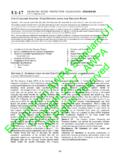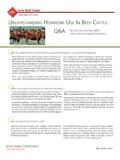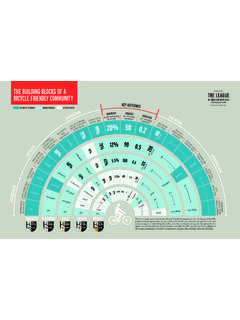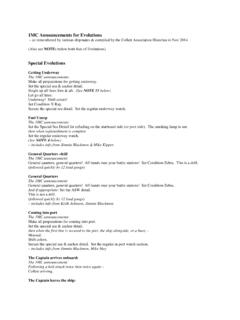Transcription of FOOD SECURITY AND NUTRITION: CHALLENGES FOR …
1 food SECURITY AND NUTRITION: CHALLENGES FOR. AGRICULTURE AND THE. HIDDEN POTENTIAL OF SOIL. A REPORT TO THE G20 AGRICULTURE DEPUTIES. FEBRUARY 2018. food and Agriculture Organization of the United Nations (FAO), and Organization of Economic Co-operation and Development (OECD). with inputs from International Fund for Agricultural Development (IFAD). International food Policy Research Institute (IFPRI). The World Bank Group World Trade Organization (WTO). The designations employed and the presentation of material in this information product do not imply the expression of any opinion whatsoever on the part of the food and Agriculture Organization of the United Nations (FAO) or the Organisation for Economic Co-operation and Development (OECD) concerning the legal or development status of any country, territory, city or area or of its authorities, or concerning the delimitation of its frontiers or boundaries.
2 The mention of specific companies or products of manufacturers, whether or not these have been patented, does not imply that these have been endorsed or recommended by FAO or OECD in preference to others of a similar nature that are not mentioned. The views expressed in this information product are those of the author(s) and do not necessarily reflect the views or policies of FAO or of OECD or its member countries. FAO and OECD, 2018 FAO encourages the use, reproduction and dissemination of material in this information product. Except where otherwise indicated, material may be copied, downloaded and printed for private study, research and teaching purposes, or for use in non-commercial products or services, provided that appropriate acknowledgement of FAO as the source and copyright holder is given and that FAO's endorsement of users' views, products or services is not implied in any way.
3 All requests for translation and adaptation rights, and for resale and other commercial use rights should be made via us/licence-request or addressed to FAO information products are available on the FAO website ( ) and can be purchased through publications- iii iv 1. INTRODUCTION .. 1. 2. TRENDS AND 1. food SECURITY AND NUTRITION .. 1. DEMAND FOR food .. 4. CLIMATE CHANGE .. 6. SUSTAINABLE AGRICULTURAL PRODUCTIVITY GROWTH .. 10. Increasing agricultural production sustainably .. 11. Innovation and R&D in food and agriculture .. 12. Investment and enhancing international exchange on R&D and innovation .. 14. TRADE AND TRANSPARENCY IN food MARKETS .. 15. Global trends in market demand have reduced pressures on prices .. 16. 3. SOILS: A HIDDEN POTENTIAL IF WELL 19. STATUS OF GLOBAL SOILS .. 19. Soil erosion .. 19.
4 Soil organic carbon (SOC) loss .. 21. Nutrient 21. IMPACTS OF SOIL DEGRADATION .. 23. SUSTAINABLE SOIL MANAGEMENT PRACTICES .. 24. ROLE OF INFORMATION COMMUNICATION TECHNOLOGY (ICT) .. 28. ONGOING COLLECTIVE RESPONSES AND INTERNATIONAL GOVERNANCE .. 29. Global Soil Partnership .. 29. The Intergovernmental Technical Panel on Soils .. 30. The revised World Soil Charter .. 30. The Voluntary Guidelines for Sustainable Soil Management .. 30. The Global Symposium on Soil Organic 31. 4/1000 initiative: Soils for food SECURITY and Climate .. 31. Global Symposium on Soil Pollution .. 32. WAY FORWARD .. 33. RECOMMENDATIONS .. 33. v This report, prepared by FAO and the OECD with inputs from IFPRI, IFAD, the World Bank and WTO, has been submitted to the G20 Presidency of the Republic of Argentina in response to the Presidency's request for information on future trends and CHALLENGES faced by global agriculture, with a special focus on the role of soils in promoting food SECURITY and the measures that could be undertaken to facilitate sustainable soil management.
5 February 2018 vi Introduction Today, agriculture faces a triple challenge. The production of safe and nutritious food will need to increase to meet the growing demand and ensure food SECURITY for all. The sector has to generate jobs and incomes and contribute to poverty eradication and rural economic growth. Furthermore, it has a major role to play in ensuring the sustainability of natural resources and in combating climate change. This report, prepared by FAO and the OECD with inputs from IFPRI, IFAD, the World Bank and WTO, is submitted to the G20 Argentinian Presidency in response to the Presidency's request for information on future trends and CHALLENGES faced by global agriculture, with a special focus on the role of soils in promoting food SECURITY and the measures that could be undertaken to facilitate sustainable soil management.
6 Section 2 of the report discusses a number of global trends that are affecting agriculture and food SECURITY , and the CHALLENGES they pose. The section also maps the G20 initiatives and actions that address these trends and CHALLENGES and, in conjunction with the information provided by Stock-taking exercise of G20 initiatives, provides a comprehensive account of collective action to date. Section 3 focuses on soils and sustainable soil management. It discusses the status of global soils and identifies the most important threats. It presents sustainable soil practices, and discusses the international fora that focus specifically on soil resources. Finally, the section provides a number of recommendations for consideration by the G20 Agriculture Deputies. Trends and CHALLENGES food SECURITY and nutrition The global rate of undernourishment significantly decreased from percent in 2000 to percent in 2013.
7 After this prolonged decline, the rate of reduction in world hunger appears to have slowed in the past few years, coming to a virtual halt between 2013 and 2015. Most worryingly, recent estimates for 20161 indicate that the global prevalence of undernourishment may have risen slightly to 11 percent, affecting a total of 815 million people, up from 777 million in 2015, and suggesting a possible reversal of the downward trend seen in recent decades. (Figure 1). Sub-Saharan Africa remains the region with the highest rate of undernourishment, affecting percent of the population in 2016. The situation is especially urgent in Eastern Africa, where one-third of the population is estimated to be undernourished. By contrast, undernourishment remains low in Latin America, although there are signs that the situation may be changing, especially in South America, where the levels rose from 5 percent in 2015 to percent in 2016.
8 1 FAO, IFAD, UNICEF, WFP and WHO. 2017. The State of food SECURITY and Nutrition in the World resilience for peace and food SECURITY . Rome. 1 Figure 1. Prevalence of Undernourishment by region, 2000-2016 30. 25. 20. 15. 10. Percentage 5. 0. 2000 2005 2010 2011 2012 2013 2014 2015 2016*. WORLD AFRICA. ASIA LATIN AMERICA AND THE CARIBBEAN. OCEANIA. *Projected values Source: FAO, IFAD, UNICEF, WFP and WHO. 2017. The State of food SECURITY and Nutrition in the World 2017. Building resilience for peace and food SECURITY . Rome. Estimates of the severity of food insecurity, based on an experience scale2, and the differences in these estimates across continents, largely reflect those for undernourishment. Africa has the highest levels of severe food insecurity, reaching percent of the population in 2016, almost four times the level of any other region.
9 It is also one of the regions where food insecurity is on the rise, particularly in sub-Saharan Africa. Higher food insecurity was also observed in Latin America between 2014 and 2016, rising from percent to percent, while in Asia it decreased slightly over the same period, from percent to percent overall. The observed increases in undernourishment and severe food insecurity are most notable in situations of conflict and political instability, both of which hinder growth and represent major drivers of poverty. For example, conflict, compounded by severe weather events, has resulted in an unprecedented situation of severe food insecurity in South Sudan, Somalia, North-Eastern Nigeria and Yemen. These countries together account for 108 million people on the brink of famine. The worrisome reversal of the downward trend in undernourishment is, however, not yet reflected in nutritional outcomes.
10 Evidence points to continuous decreases in the prevalence of stunting among children under the age of five years from percent to percent between 2005 and 2016. Nevertheless, stunting still affects 155 million children under the age of five years, increasing their risk of impaired cognitive ability, weakened performance at school, and dying from infections. Wasting affected one in twelve (52 million) of all children under five years of age in 2016, more than half of whom ( million) live in Southern Asia. Anaemia, a condition arising from micronutrient deficiency with significant adverse health consequences for women and their offspring, affects 33 percent of women of reproductive age globally (about 613 million).3 2 Measured using the food Insecurity Experience Scale (FIES), an experience-based metric of the severity of food insecurity, relying on direct yes/no responses to eight questions regarding access to adequate food .
















